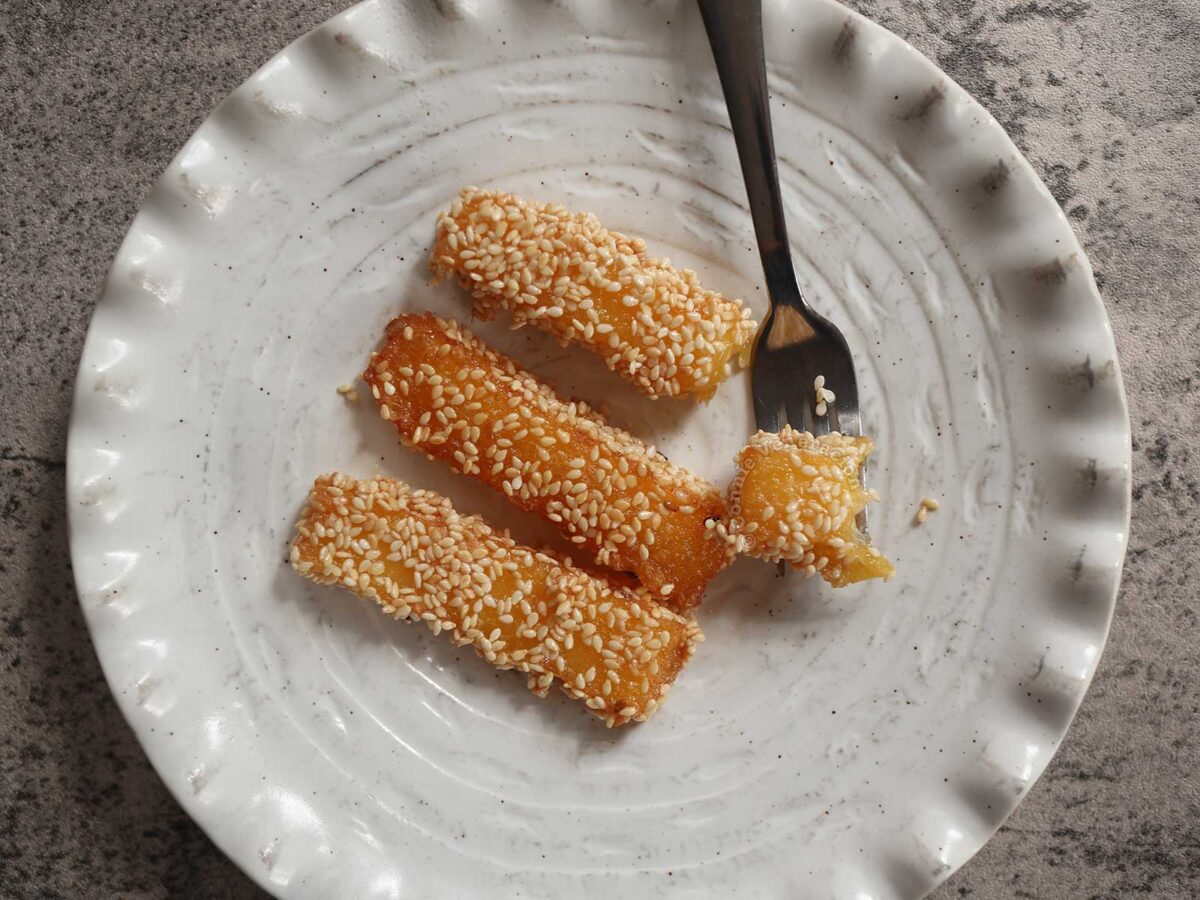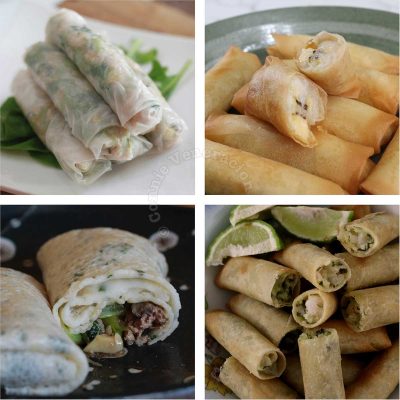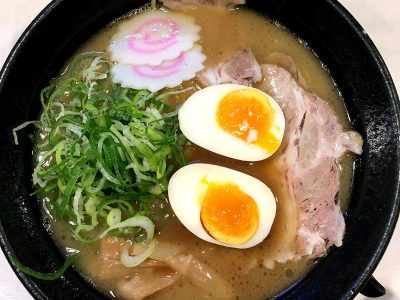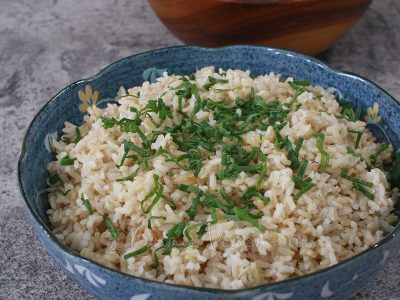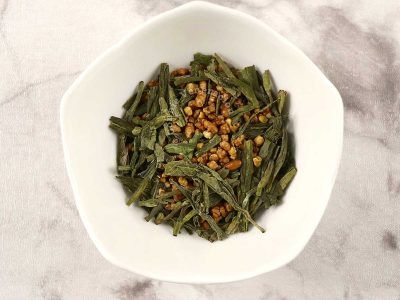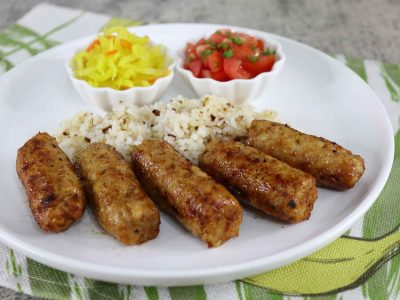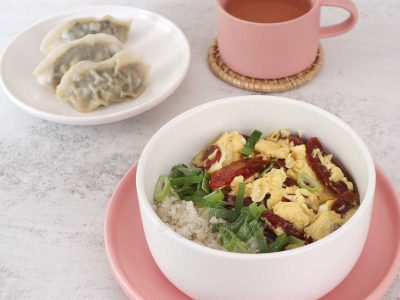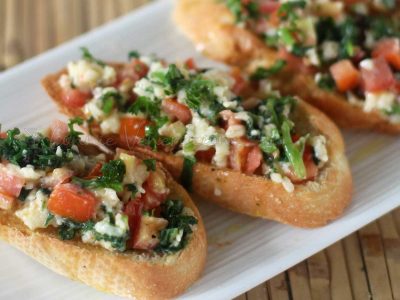Much of Asia (and Asian communities around the world) will celebrate the Lunar New Year soon to welcome the Year of the Dragon. I’ve long had this whimsical idea of experiencing Lunar New Year in different cities in Asia but, alas, what hit the world in 2020 changed all that. Perhaps, in the near future… Meanwhile, we can enjoy nian gao at home (even though we’re not Chinese).
We call it tikoy in the Philippines, home to the oldest Chinatown in the world. These days, it comes in so many flavors. In the photo above, tikoy in strawberry, pandan, corn and purple yam (ube) flavors.
I grew up eating tikoy. Even when I was still too young to go to school, I watched my grandfather slice the rice cake, dip the slices in beaten egg and fry the slippery pieces until they were golden and the egg had turned into a lightly crisp crust.
What is nian gao made of?
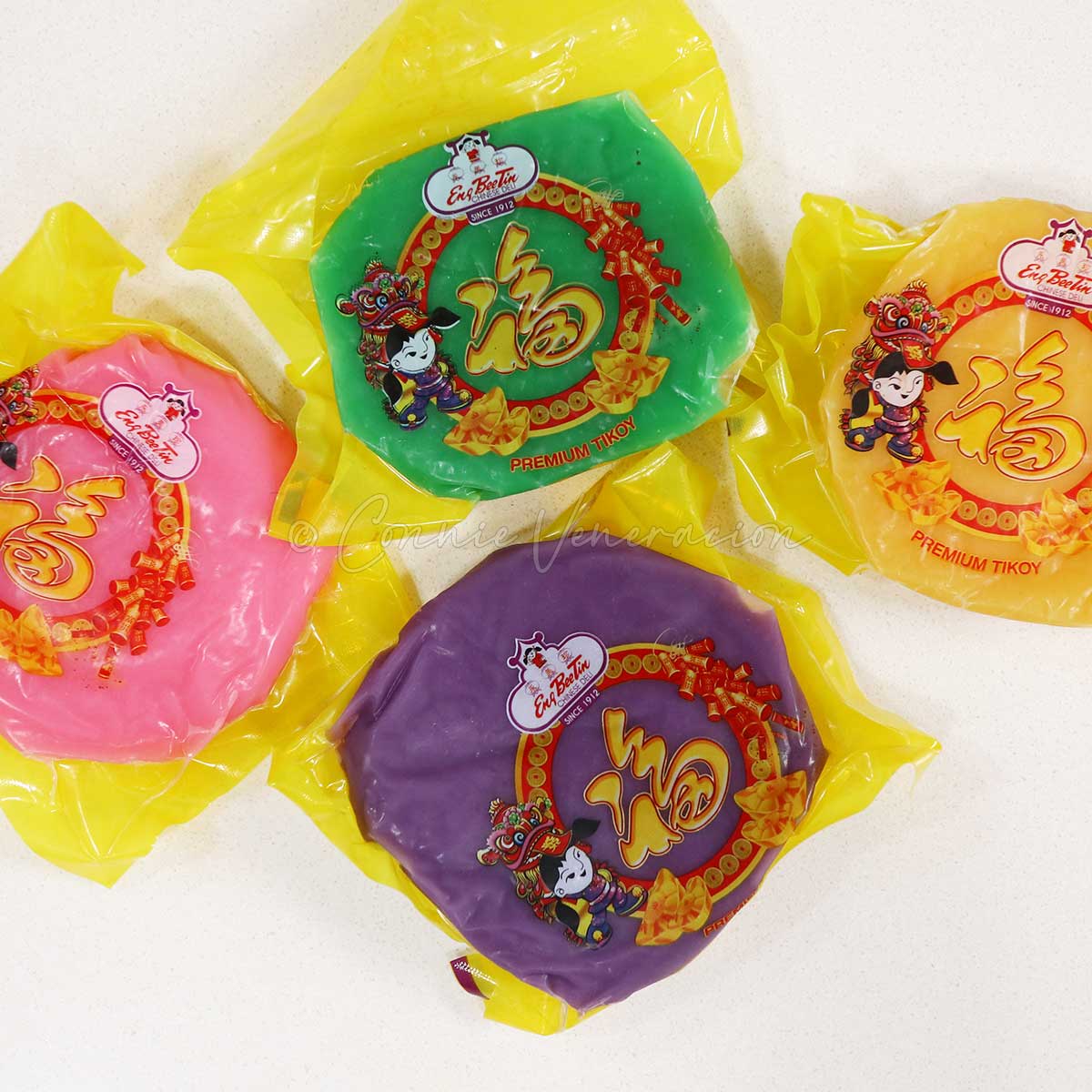
Nian gao is made with glutinous rice flour, sometimes steamed and, at other times, cooked in a pan and stirred until thick. It may be savory or sweetened. The nian gao given and received as gifts during Chinese New Year is the sweet variety. How it is served varies from region to region.
How did nian gao become associated with the Lunar New Year?
One story has it that it was an offering to bribe the Kitchen God (a reference in Amy Tan’s The Kitchen God’s Wife) who reports everyone’s behavior to the Jade Emperor.
Another theory has to do with how nian gao is pronounced.
the words nian gao (sticky cake) sound similar to “year high” and this has come to symbolise a higher income, position and children (in terms of growth), with the overall promise of a great year ahead.“
Why is eating turnip cake and nian gao sticky rice cakes believed to bring good luck during Lunar New Year?” in SCMP
Then, there is the the superstition that the Kitchen God resides in every home.
At the end of every year, folklore says, the Kitchen God makes his “yearly report” to the Jade Emperor. To prevent him from badmouthing their house, people offered niangao, which would stick his mouth shut. Hence, niangao is prepared for offering before Chinese New Year.
“Nian Gao (Chinese New Year Cake): Meaning, Types, Recipe” in China Highlights
Finally, there’s a legend involving a monster known as Nian who preyed on a village and the Gao family that found a way to make it go away and leave the village in peace. How? By feeding it rice cakes and scaring it with firecrackers. Henceforth, the sticky rice cakes came to be known as nian gao after the name of the monster and the family that saved the village.
How do we enjoy nian gao at home?
Sliced nian gao dipped in beaten egg, fried until soft and the egg has formed a light crispy crust was the default method I knew from childhood. I have since learned to serve nian gao in other ways.
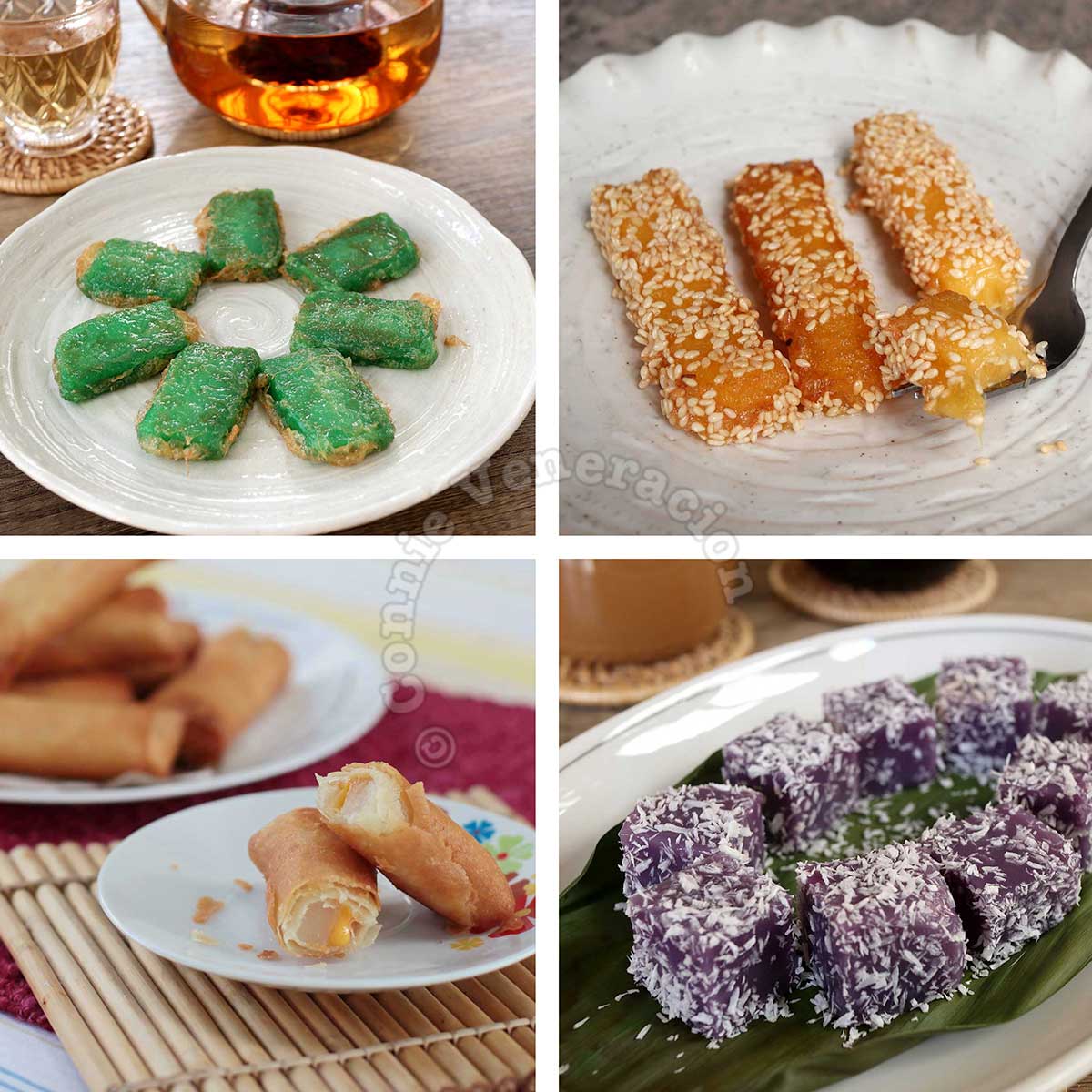
In addition to the default method, we serve nian gao (1) coated in sesame seeds and pan fried; (2) with cheese as filling for fried spring rolls and (3) rolled in desiccated coconut and steamed.
1 – Fried nian gao dipped in egg
Take a sharp knife and wipe lightly with cooking oil. Position the knife on top of the nian gao and press down. Don’t cut using the sawing motion; otherwise, the cake will stick to the metal. The ideal thickness is one-fourth to one-half inch. My personal preference is on the thickish side. You may have to wipe the knife with oil repeatedly until you have sliced the whole ;nian gao.
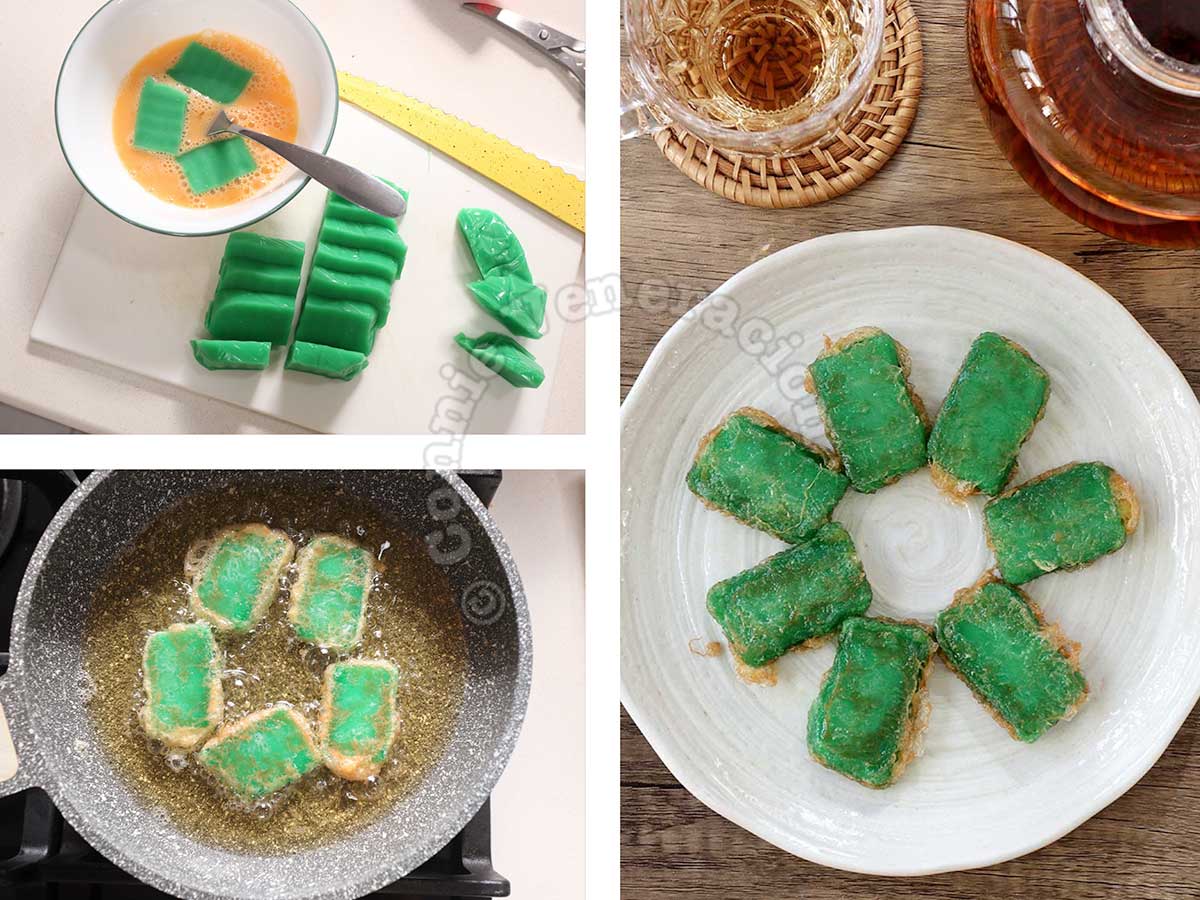
Start heating oil in a wok or frying pan. This isn’t deep frying. You want just enough oil to reach a depth of about half an inch.
Dip each piece of rice cake in beaten egg.
Fry the nian gao in batches. The temperature of the oil should be somewhere between medium and low. What you are aiming for is to allow the rice cakes to soften in the heat before the egg darkens too much.
Flip the nian gao to brown the other side.
Drain the cooked nian gao on paper towels and serve immediately. If you cooked them correctly, the rice cakes should be soft and sticky while the outside is golden brown and crisp.
2 – Fried nian gao with sesame seeds
Follow the procedure above for cutting the rice cake. You may slice it or, if you want a different presentation, try cutting it into sticks about half an inch thick and three inches long.
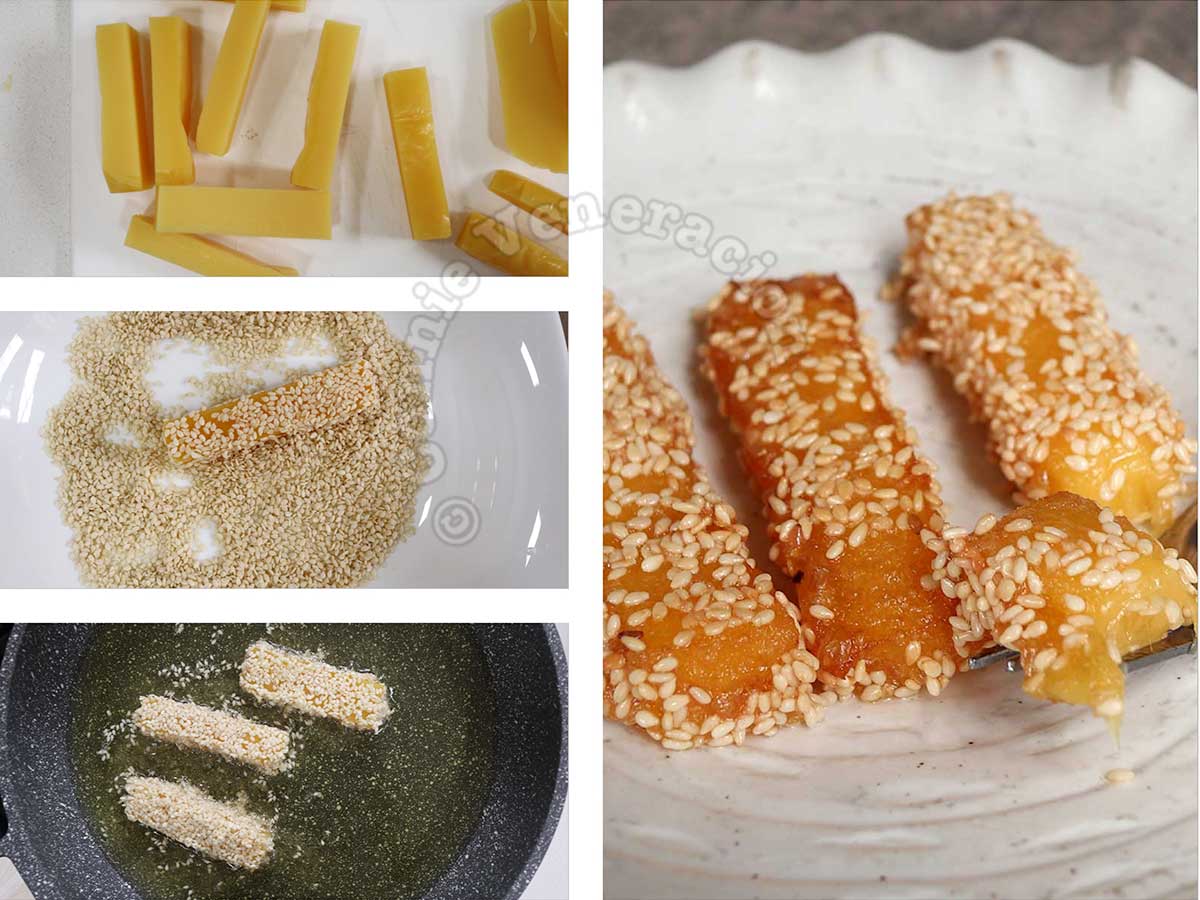
Heat oil in a pan.
Dip the cut nian gao in sesame seeds (it helps to press the seeds into the cake to prevent them from falling off during frying) then fry in batches. Give the sticky rice sticks quarter turns for even browning.
Not a fan of fried nian gao? You can steam it.
3 – Steamed nian gao with desiccated coconut
For my steamed nian gao, I decided to cut the rice cake into cubes.
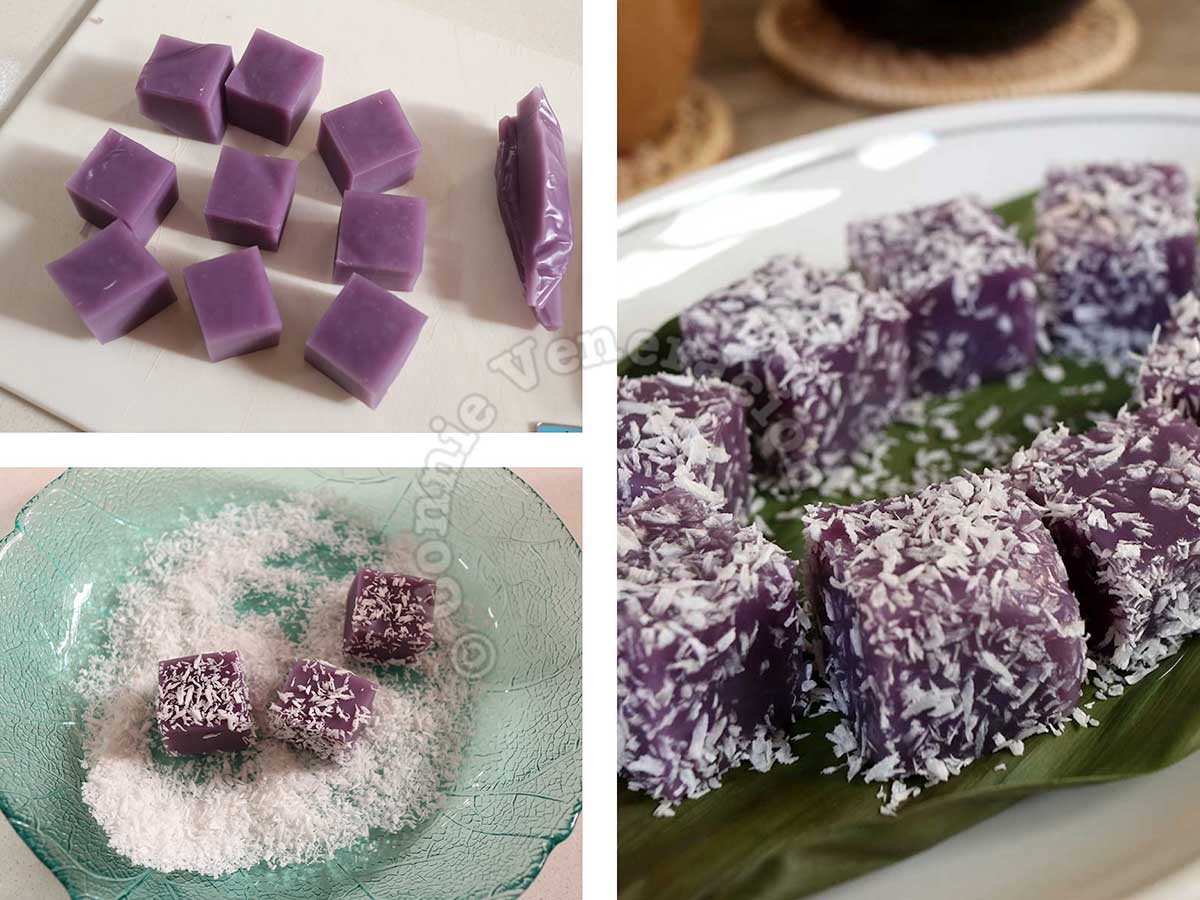
The cubes were rolled in desiccated coconut (again, pressing the coconut on all sides of the nian gao helps it stick better) then arranged on a plate lined with a piece of banana leaf (you may use non-stick paper).
The plate went into the steamer basket and the nian gao was cooked for ten minutes over briskly boiling water.
4 – Nian gao and cheese spring rolls
This is a serving method I learned from a fellow blogger. She doesn’t blog anymore but she might be happy to know that the instructions on the label of the nian gao we have this year suggests using the rice cake as spring roll filling.
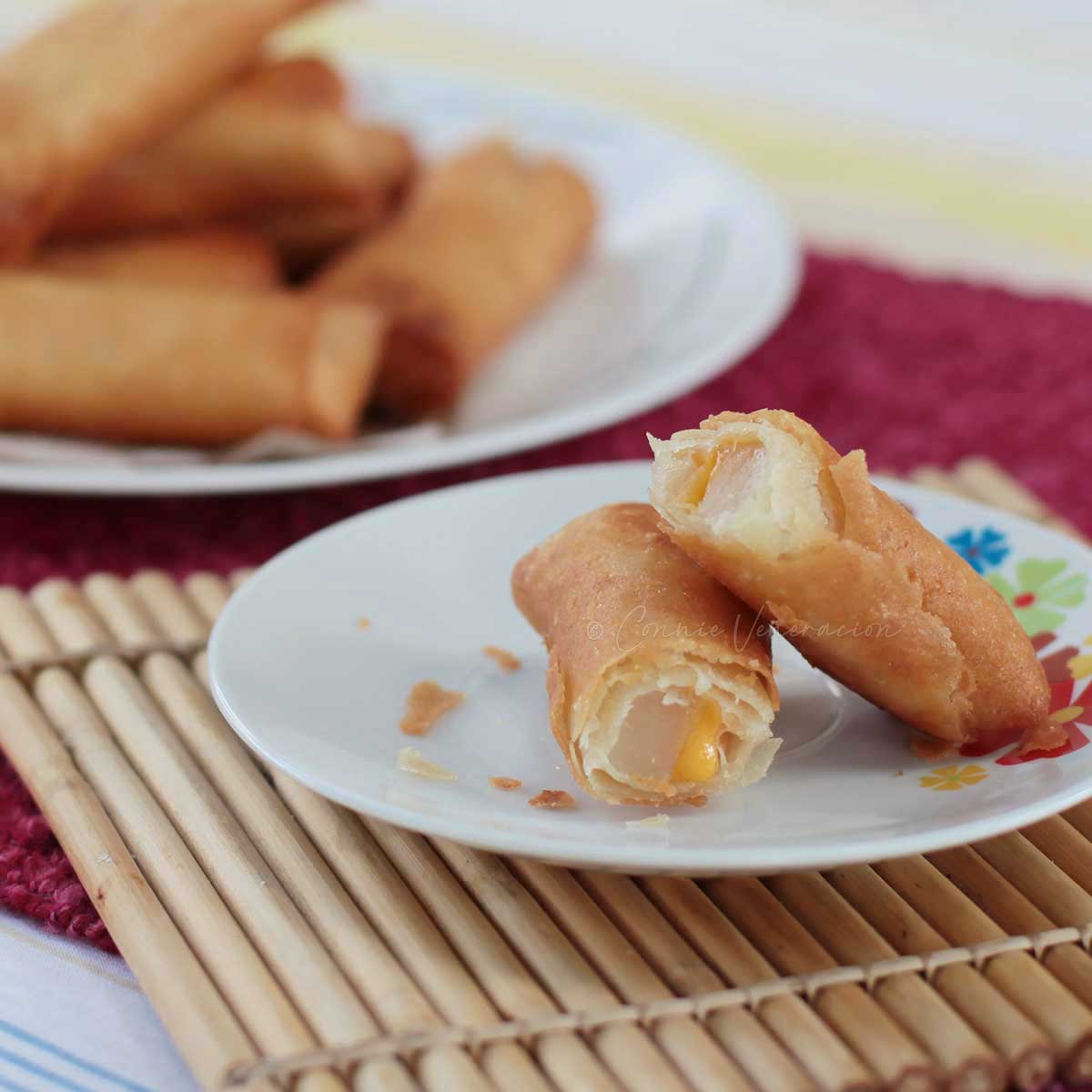
Cut the nian gao into sticks, lay on a spring roll wrapper with a strip of cheese, roll and seal. If you need a visual guide, see the linked post below.
How to wrap, store and reheat spring rolls
The English-speaking world calls them spring rolls although this Asian delicacy has nothing to do with spring. They are served fried or non-fried and fillings vary. The wrappers vary too depending on which part of Asia you are in.
And there you have it. Four ways to enjoy nian gao!

